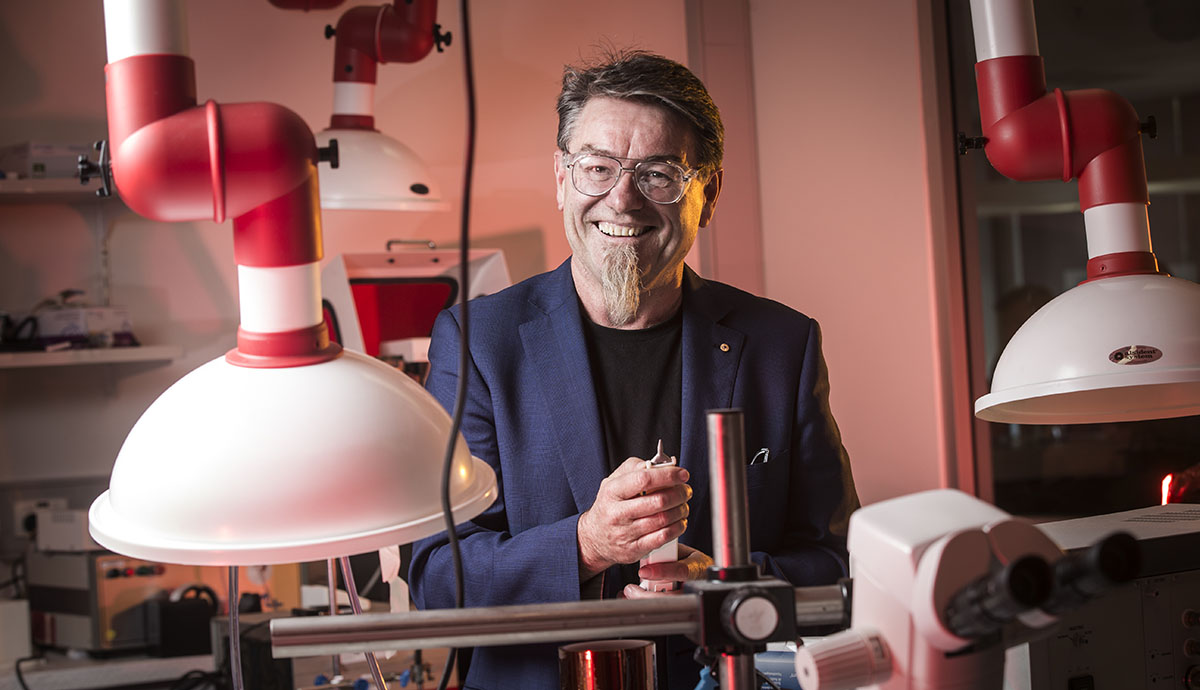December 6, 2017
3D bioprinter designed and built at UOW offers diabetes cure
Royal Adelaide Hospital first in Australia to receive cutting edge biomedical printing device.
In an Australian first, researchers at the University of Wollongong (UOW) have designed and built a customised 3D bioprinter that promises to revolutionise treatment for people with Type 1 Diabetes.
The printer will be capable of delivering insulin-producing islet cells from a protective bioink into a printed scaffold suitable for transplant.
The Pancreatic Islet Cell Transplantation (PICT) 3D Printer was officially handed over to South Australian Minister for Health Peter Malinauskas for use at the Royal Adelaide Hospital (RAH) today (Wed 6 December 2017) by ARC Centre of Excellence for Electromaterials Science (ACES) Executive Director and ANFF Materials Director, Professor Gordon Wallace.
The RAH is the first hospital in Australia to receive this cutting edge biomedical printing device, developed by researchers from ACES and ANFF Materials, headquartered at UOW. The PICT Printer will be developed further with funding from an Australian Research Council’s Linkage, Infrastructure, Equipment and Facilities (LIEF) grant.
Professor Wallace said the development and hand over of the PICT Printer marked a new era in manufacturing as ACES researchers continue to expand their clinical connections and explore new opportunities for customised 3D bioprinters and bioink formulations.
“ACES at the University of Wollongong has built a collaborative clinical research network that enables us to tackle big clinical challenges and deliver practical solutions using 3D bioprinting,” Professor Wallace said.
“In collaboration with Professor Toby Coates’ team at Royal Adelaide Hospital, we plan to improve the effectiveness of islet cell transplants by encapsulating donated islet cells in a 3D printed structure, to protect them during and after transplantation.”
Currently only the most severe cases of Type 1 Diabetes can be treated with islet cell transplantation from human donors. These donor islet cells restore the diabetes sufferer’s ability to produce insulin and regulate their blood sugar levels.
The printed transplant material has the potential to reduce the likelihood of rejection as a patient’s own cells could be used. Also, because multiple cell types can be printed in the same run, endothelial cells – essential for installing blood flow to the grafted islet cells – can be implanted, improving islet cell survival.
RAH Director of Kidney and Islet Transplantation, Professor Toby Coates said being at the forefront of research gave hope to those living with Diabetes.
“The PICT Printer will allow us to make customised organs, mixing donor with recipient cells in a unique 3 Dimensional way to provide completely new composite “organoids” for experimental transplantation,” Professor Coates said.
